With so many diets available today, it’s hard to find one that suits your needs and is still effective at producing results. From all the different diets out there, one of the most interesting is the 500 Calorie Diet.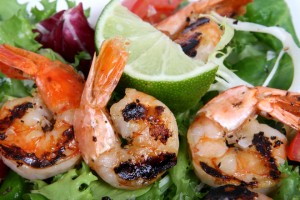
Intermittent fasting diets like this have been shown to be very effective at helping people to lose weight fast and to keep that weight off.
Having a selection of recipes for tasty, easy 500 calorie meals to hand will definitely help you to stick to the 500 calorie diet plan.
In this article we’ll look at:
- The benefits of eating low calorie meals
- Recipes for easy 500 calories meals (and under!)
- Tips for creating your own 500 calorie menus
- How to eat healthy in a restaurant
Scroll through, or use the menu below to jump ahead to a specific section.
For most people, controlling calories can be very difficult, but intermittent fasting diets diet seems to work for a lot of people who have trouble restricting their calorie intake. For those of you that aren’t familiar, let’s do a quick recap of the 5:2 diet:
The 5:2 diet involves eating normally for five days (out of seven days) and greatly limiting your intake the other two days. Typically, on the two days with limited calories, total intake should be around 500 calories.
Benefits of 500 Calorie Meals
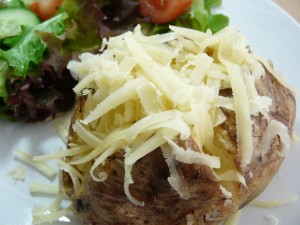
Jacket potatoes are a great low calorie option
Even if you are not on a specific low calorie diet, many nutritionists and dietitians think that many small meals over the course of the day are better for your than larger meals.
Low calorie meals have been shown to have many benefits including:
- Control – One thing that everyone on the 500 calorie diet seems to enjoy is the fact that they have a huge amount of control in what they are eating. Even when you are limiting your meals to just 500 calories each, you can select exactly what food you want to put together to add up to the 500 calories.
- So if you want to sacrifice an entire meal on that one piece of cheesecake, you can! You just have to stop after that and wait until the next meal to eat again.
- Reduced appetite – One cool side effect people have noticed with this tactic is that it seems to train your brain to not like these types of foods anymore. What happens is someone really wants a piece of cheesecake, for example, so they sacrifice their 500 calorie meal just to eat that 500 calorie piece of cheesecake. Since that tiny piece of cheesecake used up all 500 calories, they’re left hungry for hours until the next meal.
- After doing this a few times, the brain starts to realize this pattern – if I eat this fattening food, I’m going to be left hungry for hours. Once you’ve created that association in your brain for displeasure and fattening foods, you rarely want to eat them anymore. Losing this desire for those types of fattening foods is vital to having continued success in the future with your weight loss.
- Increased metabolism – There’s actually multiple health benefits that go along with the diet besides the weight loss aspect. For one, it’s absolutely great for your metabolism. Doctors have been recommending for years that we should eat 5 or 6 small meals per day instead of 3 large meals, and that’s what happens with the 500 calorie diet. You’re breaking down the meals you want into 500 calories each and spacing them out throughout the day, and by doing this your metabolism is constantly going strong.
- Nutrition – Another great benefit is how easy it makes it to get the fruits and vegetables you need into your diet. By putting a single serving in each of your meals, you get all the nutrients you need each day and you aren’t stuck eating a huge serving of it at one time. With the amount of vitamins and antioxidants found in fruits and vegetables, this can really help to build up your immune system.
- Improved sleep – We’ve also read reports that diets like this are remarkably effective at ensuring you get a full nights rest each night. Most people who eat high calorie meals three times per day end up going to bed with a completely full stomach. Doing this keeps your body active while you’re trying to sleep, therefore making it harder to reach a deep sleep and sometimes preventing you from falling asleep in the first place. When you’re only eating 500 calorie meals throughout the day, your body is able to digest it quickly. You don’t go to bed feeling as full as a blimp and you wake up feeling better than ever. Going into a deep sleep and letting your body repair itself is extremely important for weight loss and various other aspects of health, so if you’re having problems with your sleeping patterns this could really help.
Recipes for Easy 500 Calorie Meals
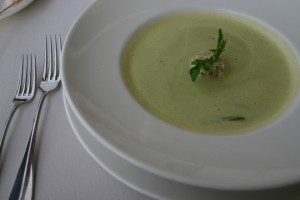
Soups are a great way to feel full and stay healthy
When dieting it will make your life a lot easier if you plan out what you are going to eat in advance.
This will mean that you don’t have to count calories all day and you always have your next meal to look forward to.
Try having a meal prep day where you make all of the meals for the week beforehand and put them in containers. This ensures that you always have food ready to eat and will discourage you from snacking or ordering take out.
With that in mind we’ve picked a few easy low calorie meals from across the web that have received a lot of positive reviews.
- Sweet Potato Burger with Avocado – 367 Calories
- Pan Seared Steak & Eggs – 404 Calories
- Spaghetti Squash With Spinach, Parmesan, and a Fried Egg – 403 Calories
- Shrimp Arugula Salad With Avocado – 328 Calories
Those are just a few recipes but you get the idea – you can have an awesome, tasty and filling meal and still keep it under 500 calories too.
Very Low Calorie Meals
If you’re on the 500 Calorie Diet you need a selection of tasty meals that are well under 500 calories so that you can stagger your intake.
We have searched the web for a selection of tasty meals under 500 calories that you can mix and match to help you through your fast days:
- Southwestern Tofu Scramble – 202 calories
- Fluffy tofu with black beans, corn, and mixed greens. The tofu has a consistency like scrambled eggs, and is high in protein but low in fat. Great for vegetarians and carnivores alike. This recipe is super easy to prepare, all you need is a skillet and some oil and seasoning!
- Provencal-Style Edamame Saute – 318 calories
- This dish is full of flavor with its dashes of garlic, olive oil and olives. It is also packed with protein and is designed to fill you up. Edamame may take a little while to get used to, but it is a superfood rich with protein.
- Crushed potatoes and shoots – 170 calories
- Starchy potatoes are a great with a side of shoots and vegetables. Most people try to stay away from carbs and starches on a diet, but these are what make you full. A little starch and some carbs never hurt. Season the potatoes with spices instead of sauces or butter. It’s healthy and it fills you up. This recipe is great because it is easy to make and take with you!
- Spinach omelette – 94 calories
- Protein-packed egg and iron-rich spinach makes for a delicious breakfast. Grease your pan with coconut oil instead of butter or olive oil for a lighter taste. Flavor your omelette with salt and pepper. Since eggs are low in calories, feel free to add additional vegetables as you see fit. This omelette is a quick breakfast and contains easily available ingredients!
- Leek and potato soup – 134 calories
- This hearty soup will keep you full until dinner, without sacrificing your low calorie diet! Potatoes, leeks, and peas all help give this soup its yummy flavor. The starch in the potatoes keep the soup creamy and flavorful. Soup is easy to take on the go and can be made in bulk, making lunchtime easier!
- Barbecue Salmon and Snap Peas – 268 calories
- Salmon is low in calories and rich in healthy fats. Grilled salmon is a healthy alternative, and tastes great. When made on the grill this dish almost doesn’t need seasoning. Salmon is easy to prepare and full of Omega 3. Perfect for a healthy, low calorie, and satisfying dinner!
- Baked Honey Mustard Chicken – 282 Calories
- This meal is super juicy and easy to throw together, minimal effort required. The chicken itself is rich with protein and is super filling. The honey mustard merely adds to the flavor, and is perfect when paired with a side of vegetables, such as spinach, green beans, or peas.
You may also want to take a look at our post on Low Calorie Breakfast ideas to get your day off to a great start.
Remember, you’ll be able to to prepare many of these meals in advance and freeze them, so you’ve always got a healthy dinner option to hand.
Once you get into the swing of things with these recipes you really won’t even need to worry about a calorie counter anymore, your meals will do all the calorie counting for you.
Tips for Creating your own 500 calorie recipes
Worried about cinching your calories down to 500? Here are a few tips for making the most of the low calories meals!
- Eat foods that you enjoy – If you hate fish, don’t force yourself to consume it! You will dread mealtime and most likely make up for the fact that you ate something you didn’t like by overeating the unhealthier foods you do like!
- Avoid foods that are particularly calorie dense (foods with a lot of calories) – These foods don’t fill you up as much and leave you feeling hungry. Examples of these are sugary things, and carbs like white pasta and bread. Fill your 500 calories with healthy foods that are nutritious and that will fill you up, such as beans and chicken!
- Focus on vegetables and protein – Protein comes from a lot of places, so don’t be afraid to mix it up! Beans, chicken, lean beef, eggs, fish, yogurt, cottage cheese, and lentils all are excellent sources of protein. Change it up so you don’t get bored of eating the same thing all the time.
- Be clever with portion size – For example, if you love rice or cheese, you can have a small amount in your diet. Don’t deprive yourself of the foods you love, but keep them in moderation!
For more tips on getting through the day on under 500 calories, check out this post.
Eating Healthy at a Restaurant
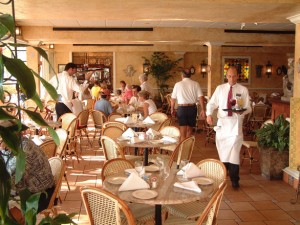
You can still eat healthy at a restaurant
Part of building a sustainable diet plan is about being able to enjoy the usual pleasures in life, such as a restaurant meal with family or friends.
If your diet can’t accommodate this, you are far more likely to become disheartened and give up altogether.
Thankfully there are some very simple steps that you can take that will minimize, or otherwise counterbalance the impact of eating out, many of them similar to the points above about creating your own recipes.
- Plan ahead – Look at the menu beforehand and try to limit going to places where there is simply no option of getting something that will fit in with your meal plan. You can also use this time to search for special offers or discounts.
- Portion control – You don’t have to eat the whole thing. You’re in the restaurant to taste nice food and enjoy good company, not to stockpile calories.
- Substitute – Swap out your carbs for veg. Don’t be afraid to tweak what is on the menu to meet your needs, most restaurants will be happy to do this.
- Take care with liquid calories – Alcohol is full of calories, but some drinks are worse than others. Consider opting for Gin and Slimline tonic, or Vodka and diet coke, which will typically contain only around 50 calories. A pint of lager in comparison will contain nearly three times that.
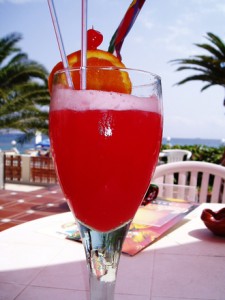
Watch the liquid calories when eating out
- Use your Cheat day – If you can, schedule the meal out for your cheat day, when you’ll likely be consuming more calories anyway. Alternatively, consider moving your cheat day for this week to accommodate the meal.
- Counterbalance – If you can’t schedule your cheat day to coincide with the meal, then consider cutting your calories on other days to balance it out. If you know that your calorie intake will be particularly high on one day, try to cut back either the day before, or the day after. Even if you’re not strictly on the 500 Calorie Diet, you can use a simple meal plan from one of the fast days, and you should see your weight correct in no time at all.
- Exercise – Despite the steps listed above it is likely that a restaurant meal will involve more calories than you’d normally consume for dinner. It is therefore really important that you get some exercise to offset these additional calories. Eating out in the evening can often disrupt your opportunities to exercise, particularly if you are consuming alcohol. You should try to plan your day to accommodate this, such as by getting up slightly earlier so that you can do a short workout in the morning. This will also give your metabolism a boost, helping you to process the extra calories faster.
These steps will help to ensure that you are able to do the usual things you enjoy while still losing weight.
However, the real key is not to stress about it.
Have a great time, enjoy the nice food and good company, if you’re eating right most of the time and you’re exercising regularly you may find that you can get away with the occasional restaurant meal without it having any impact at all.
Time to Start Cooking
Eating a low calorie diet doesn’t mean that you have to compromise taste or that you have to be hungry all the time. Low calorie means that you are taking extra care of what goes into your body, putting in only food that will fill you up and fuel your day.
These are really great meals that will help you to achieve your weight loss goals, without feeling like you’re going on hunger strike on a weekly basis.
Your goals are attainable, especially when you put them in perspective.
Restricting calories twice per week is not the end of the world. Just make sure that on the days where your calories are not restricted you don’t over-eat or eat a ton of junk food.
Combining this diet with regular exercise will keep you in great shape. Find an activity that you like, whether it be biking, jogging, or jumping on the elliptical. You’ll be more likely to stick to it and working out won’t feel like a chore.
As always, experiment with these recipes and find the ones you like best, then build them in to your everyday routine, soon you won’t even realize that you’re limiting your calories and you’ll start feeling great.
At very least, grab a few recipes that you really like and put them together next week and try them. Most people are surprised at how full they are after eating a meal with so few calories.
If you have any questions, or want to suggest your own recipes, please get in touch.

